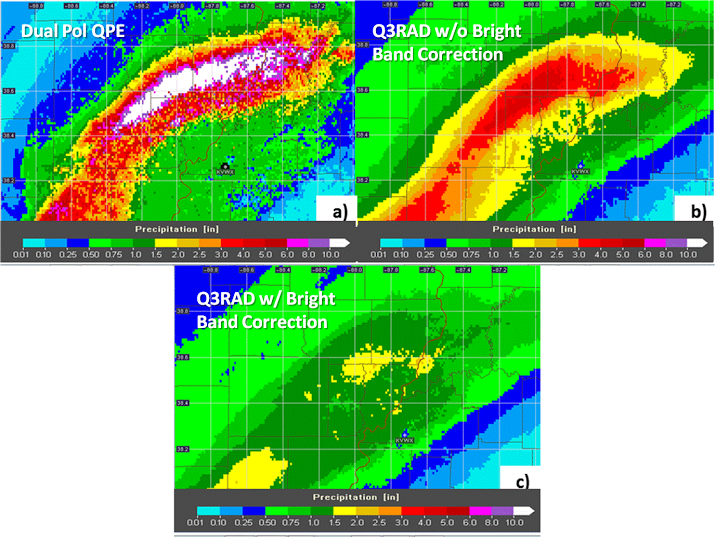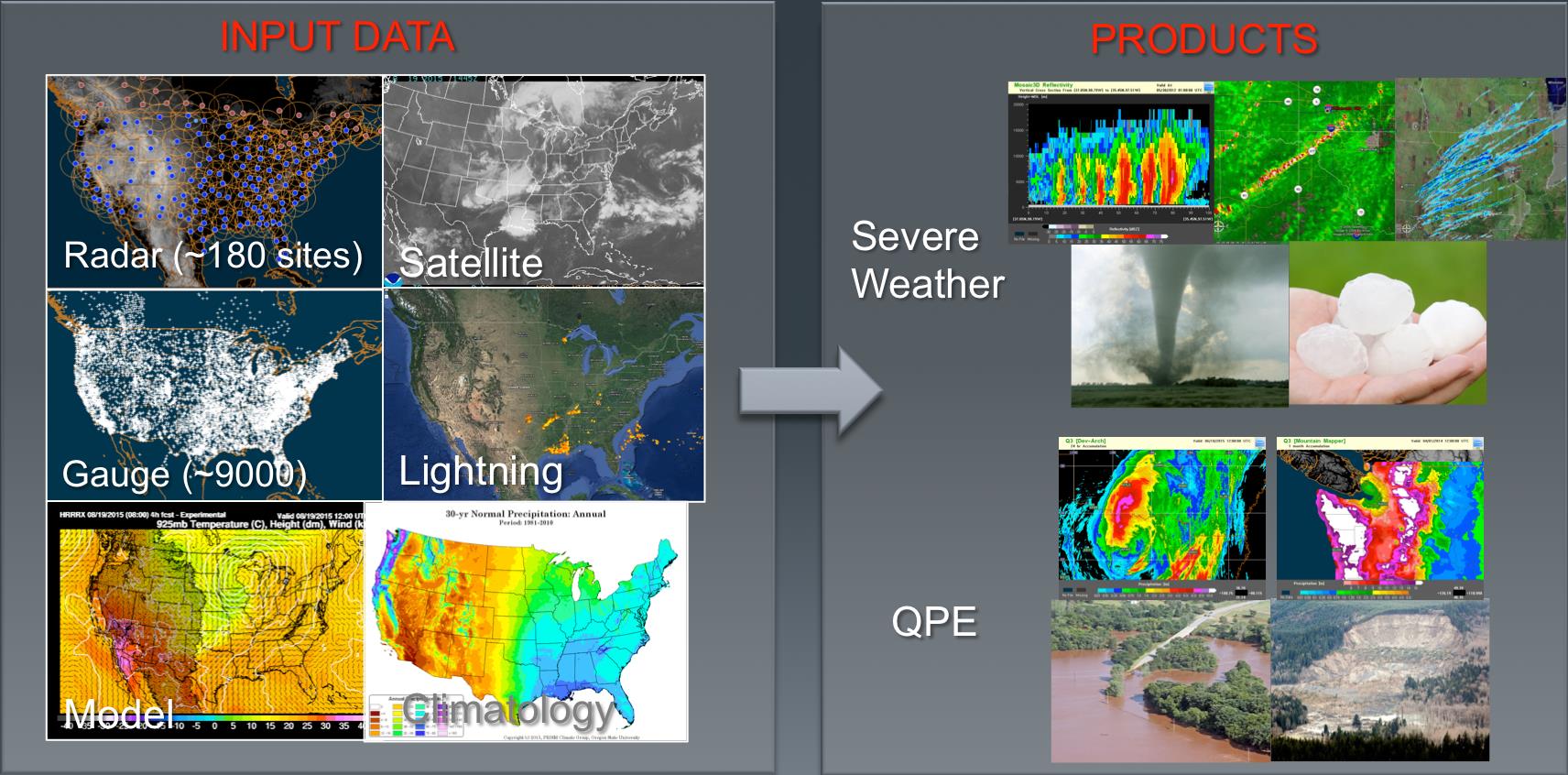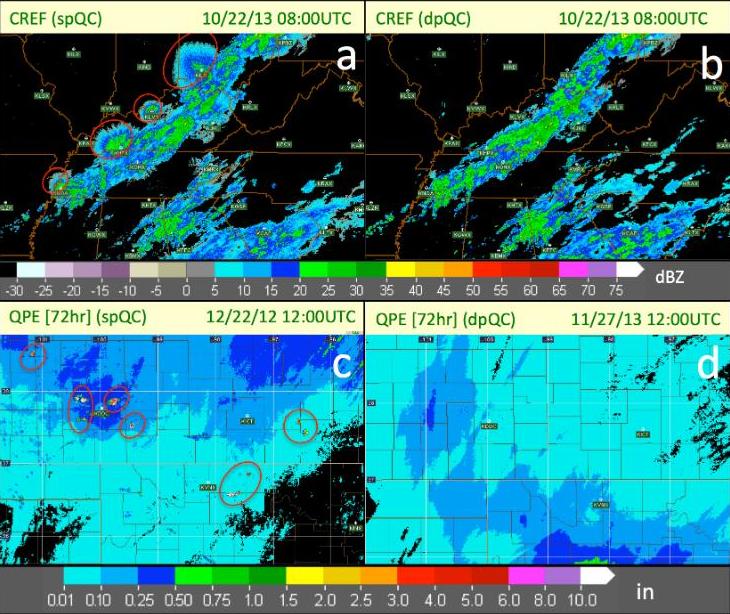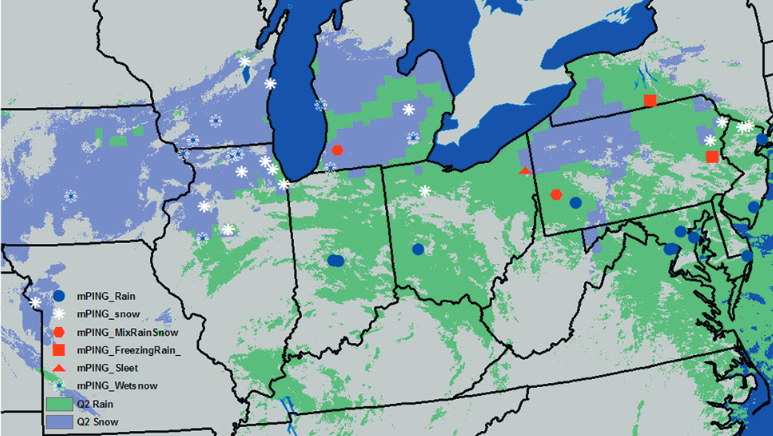MRMS QPE PERFORMANCE DURING THE 2013-14 COOL SEASON
Authors: Stephen B. Cocks, Steven M. Martinaitis, Brian Kaney, Jian Zhang, Kenneth Howard.
Journal: Journal of Hydrometeorology
Publication Date: Online 12/18/15
Important Conclusions:
This paper documents the performance of the Multi-Radar Multi-Sensor (MRMS) radar-only Quantitative Precipitation Estimate (QPE) product (denoted as Q3RAD), mosaicked single-radar dual polarization QPE (Dual Pol), and the NCEP Stage II QPE against the benchmark forecaster quality-controlled NCEP Stage IV QPE for nine precipitation events during the 2013–2014 cool season over the United States. The study was limited to weather events east of the Rocky Mountains.
Results showed that Q3RAD, Dual Pol, and Stage II all had a tendency to underestimate precipitation, with Stage II having the most distinct underestimation bias. An evaluation of stratified rain gauge amounts when compared to those products also showed an increase in the underestimation bias with higher precipitation amounts. In contrast, the Dual Pol QPE and MRMS Q3RAD exhibited an overestimation bias for 24-hr precipitation totals less than 12.7 mm (0.50 in). There was a marked difference between Stage II and the other QPE products, which reflects the substantial progress in improving precipitation estimates over the last fifteen years.
Future evaluations will analyze warm season precipitation estimates, as well as assess precipitation events in the western United States. Future work with radar-based QPE will assess the integration of dual polarization information into the MRMS Q3RAD precipitation estimates and will examine the feasibility of improving Dual Pol estimates in the melting layer.
Significance:
These are the first direct comparisons of the real-time MRMS radar-only QPE (Q3RAD) with the mosaicked Dual Pol and NCEP Stage II QPEs against the benchmark NCEP Stage IV QPE, which sees manual quality control and is available 6-12 hour after the analysis time. The research also highlighted the chief error contributions seen in the QPE evaluation. This included the impacts of how Z-R relationships are applied and bright band contamination. And while the Stage IV QPE had the best performance, Q3RAD values were nearly comparable in some events, which is distinct achievement for the fully-automated, real-time MRMS system.




